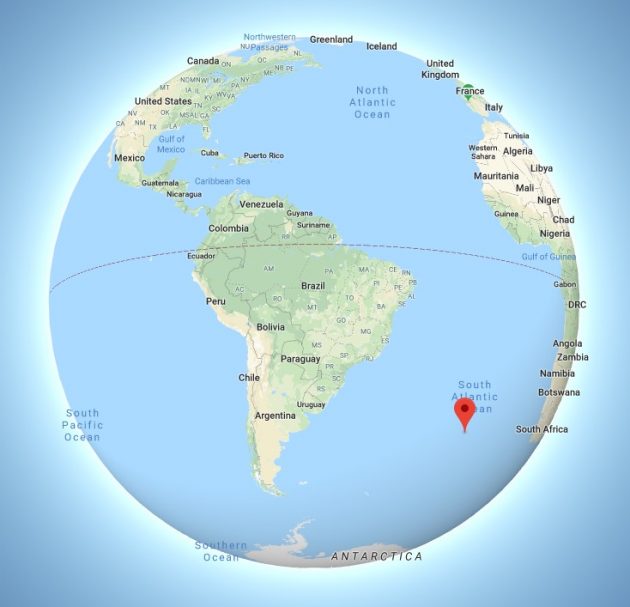Contrary to what the Greens would have us believe, some new research has painted a different story about the plastic in the oceans. It is not from us landlubbers but from those who should be more interested in looking after the environment that they work in.
It seems that merchant shipping is likely responsible for a rapid increase in the number of plastic bottles found in the world’s oceans and that Asian merchant ships are the big polluters.
Noting that it is “widely assumed” that 80% of marine plastics originate on land, the researchers say that “there is little robust evidence to support this estimate.” They further noted that several studies have reported the continuing accumulation of debris from “distant countries,” even after the dumping of plastics into the sea was banned by Annex V of the International Convention for the Prevention of Pollution from Ships (or, as it is commonly known, “Marpol”).
And so they set out to the aptly named Inaccessible Island in the South Atlantic to find out more.

Plastic rubbish has been found at Inaccessible Island since 1984. South African researchers also visited in 2009 and in 2018. In 2009 they found 3,515 items of rubbish over a 1.1-kilometre distance on the west coast of Inaccessible Island. In 2018, they found 7,368 items weighing 5 metric tonnes. Over the 72-day research trip, a further 239 bits of plastic rubbish washed up and 477 items were dug up.
Plastic drink bottles landing on the remote Inaccessible Island in the South Atlantic are showing a high accumulation rate, about 15% compared to 7% per year for all other types of plastic.
Bottles and other single-use containers (aerosols, food jars and so on) were the single most abundant type of plastic waste, and almost all identified plastic bottles were water or soft drink bottles, with water bottles comprising 61% of drink bottles overall.
The researchers found that the bottles have been increasing faster than other debris, which is not surprising given the growth of the bottled water industry.
Because plastic bottles are light, with a density similar to water, they can disperse a long way from the point where they were discarded. They tend to accumulate in areas with large circulating ocean currents (called ocean “gyres”). Islands near oceanic gyres therefore “suffer exceptionally high levels of plastic pollution, despite being located far from major source areas for plastic waste,” the researchers say.
So the researchers looked for clues as to the origin of the plastic bottles and how this had changed over time. Back in the 1980s, two thirds of bottles there came from South America. But by 2018, Asian bottles accounted for 75% of all bottles.
Asia accounted for about 74.5% of all found bottles (China itself accounted for 50.6%) and South America for another 20.1% of all found bottles. The researchers noted that “half of all bottles came from China, a country from which no bottles had been recorded in previous visits in the 1980s and 2009.”
Because plastic bottles often have date stamps, the researchers could get an idea of how long the bottles had been at sea. The group of bottles with the biggest number of bottles in it was the one containing bottles that were one to two years in age.
This was curious as Asian bottles get to the South Atlantic by way of the Agulhas Current and this will take three to five years, and seaborne plastic garbage from China, Taiwan, Japan and Korea is more typically swept by local currents into the North Pacific.
So why, then, were there many more ‘young’, Asian bottles appearing down in the South Atlantic? China does not export massive quantities of bottled water to South America so the only conclusion is that the bottles were carried there by ships and dumped overboard by humans.
There are only really two potential seaborne sources for the discarded Asian plastic that were found washed up on Inaccessible Island. They were either dumped from fishing vessels or they were dumped from merchant ships. […]
Researchers did note that merchant shipping (i.e., cargo-carrying shipping) traffic increased fourfold globally from 1992 to 2012 and that “there is an increasingly busy shipping lane from South America to Asia, principally China.” They further noted that more than 2,400 merchant ships passed by the Tristan da Cunha Island Group in 2016 at an average rate of 6.6 per day.
Researchers therefore concluded that “merchant shipping is probably responsible for much of the recent increase,” especially of Chinese bottles.
Obviously this is no excuse to leave your plastic trash on the beach this summer but, as with all things, a little perspective is useful instead of all the breast-beating that goes on here with regard to plastic bottles, plastic straws, and plastic bags.

